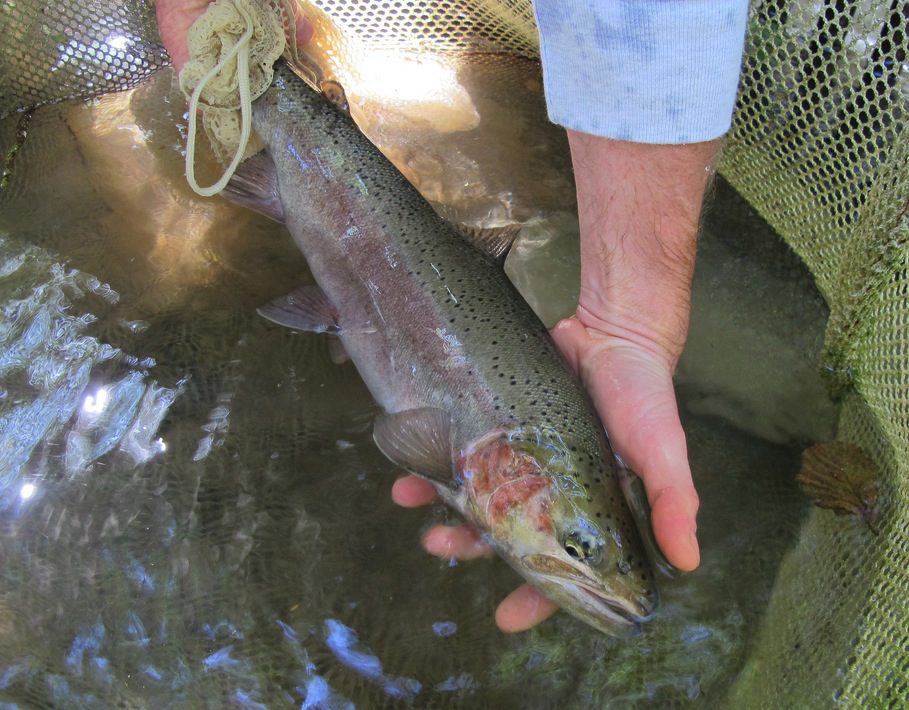Monday May 12, 2014

Coastal salmonid monitoring can be very challenging due to the typical environmental characteristics of coastal streams, as well as the migration characteristics of coastal salmon and steelhead. Since 2011, FISHBIO has been working with the Resource Conservation District of Santa Cruz under the direction of Sean Hayes of the National Marine Fisheries Service (NMFS) to develop a decision matrix tool for identifying the most suitable salmonid life cycle monitoring station techniques at a given site. The recently completed decision matrix focuses on Santa Cruz County’s Scott Creek as a case study, and can be applied to other coastal coho and steelhead streams. The California Department of Fish and Wildlife (CDFW) Fisheries Restoration Grant Program funded the creation of the decision matrix, which is now available along with a final report. The report outlines how to use the matrix, and provides examples based on the Scott Creek case study.
CDFW and NMFS are encouraging the implementation of anadromous salmonid monitoring on coastal streams through the California Coastal Monitoring Program (CMP). The intent is to develop more robust population and habitat datasets to improve the conservation of coastal coho salmon, Chinook salmon, and steelhead. In order to collect the needed data for the CMP to achieve its goals, researchers must use the life cycle monitoring techniques best suited for their particular study sites, as well as identify possibilities for applying new technologies. Many researchers have embraced technologies such as the DIDSON/ARIS sonar cameras, particularly in the flashy, turbid waters of costal streams. However, during a panel discussion at a recent conference of the California-Nevada Chapter of the American Fisheries Society, NMFS status review teams expressed that DIDSON technology has too many limitations to be considered “best available science” for collecting population data. Researchers will now be able to use the criteria in the decision matrix to help justify their use of technologies such as the DIDSON, or identify alternative, more suitable monitoring methods.
The matrix helps streamline the decision making process based on environmental parameters (such as channel depth, water velocity, turbidity, and substrate mobility), and other considerations such as cost, equipment portability, and lead time. For example, the highly variable flows in Scott Creek can mobilize relatively large, lightweight cobble during salmonid migration periods, which limits the types of equipment that can be used during these crucial monitoring periods. Researchers can use the decision matrix to objectively and quantitatively compare alternative techniques, and rank them based on their appropriateness. In the future, the matrix will benefit from experienced station operators providing feedback regarding its scoring criteria, which can be used to modify and increase the accuracy or scope of the criteria. While the matrix was developed for California coastal streams, and has been effectively used at Scott Creek, it is designed to be broadly applicable. Researchers in other salmonid watersheds can modify the matrix beyond its current focus on fixed-station monitoring to develop general salmonid monitoring plans.
This post featured in our weekly e-newsletter, the Fish Report. You can subscribe to the Fish Report here.
